
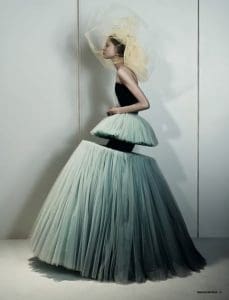
Some call it “fashion from another planet, unwearable, subversive, radically post human, alien and fashion that is a whole galaxy away from the mainstream”. Defined through a strong personality, this style can be sophisticated and striking”. Avant garde is all things experimental, radical or unorthodox with respect to art, culture or society.
Fashion designed in this manner can sometimes be considered intimidating for typical consumers. My research findings indicate that avant garde fashion designers deal with all kinds of unusual fabrics and materials like rubber, PET, Mylar etc and its principles go beyond mere aesthetics including ways in which clothes are produced and worn.
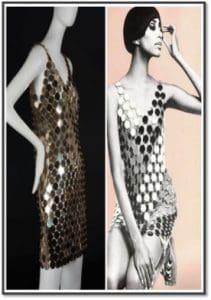

Rhodoid Rei Kawkubo
People want to define themselves outside the social norms and constantly want to experiment, which is why they get attracted to something that is bold, versatile, gender fluid and has a lot of drama to it. My research reflects that designers like Lee Alexander McQueen, Yohji Yamamoto, Paco Rabanne, Issey Miyake, and Iris Van Herpen etc. take inspiration from their personal experiences and various Japanese aesthetic philosophies, keeping in mind the trend’s key concepts i.e.
- transformability
- personalization
- uniqueness
- sustainability
Today, it feels safe to admit that people are opening up to the idea of expressing themselves however they wish to and this style that was once raising eyebrows is now a worldwide phenomenon, giving space to creativity.
Introduction
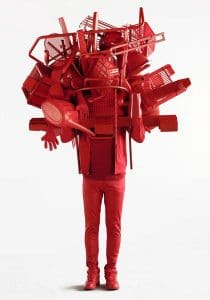
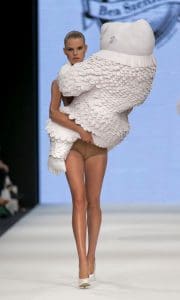
Today, we live in an era where self expression, freedom of choice, equality have become the hot topics. Majority of the population believes that true creativity comes from the freedom of self expression and that is where fashion comes into the picture. So does avant-garde fashion style. To the mainstream, it might seem like a style that is subversive, post human, alien and basically something from a different world altogether but to those who are bold enough to step out of their comfort zone, avant-garde is a style that can be defined through a strong personality. Apart from being bold, striking and powerful, avant-garde fashion gives you the freedom to experiment with unusual fabrications, shapes, silhouettes etc.
How it all started
The term “avant-garde” comes from the French and it translates to vanguard or advance guard. This term defines the few to dare to go out in the front, are unorthodox and defy conventions. Avant-garde has dual meanings. The first comes from the historical movements like Dada, Futurism, Vorticism and constructivism. The second definition comes from the innovation practices in the late 20th century.
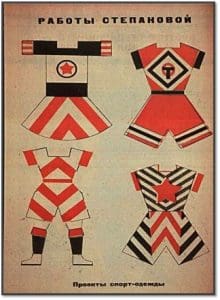
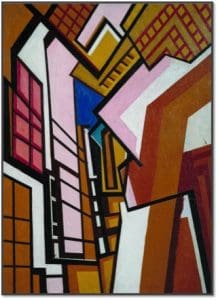
Constructivism Vorticism

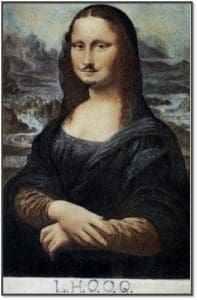
Futurism Dada
Fabrics and materials used by avant-garde designers
The most celebrated designers are Yohji Yamamoto, Late Lee Alexander McQueen, Viktor and Rolf, the John Galliano of India – Manish Arora, Thierry Mugler, Vivienne Westwood- Queen of punk fashion, Paco Rabanne, Rei Kawakubo of Comme de Garçons, Walter Van Beirendonck, Issey Miyake, Guo Pei, Junya Watanabe, Martin Margiela etc. Lately, British fashion designer Iris Van Herpen has been a major inspiration, depicting the brilliance of a human mind when combined with science and technology.


Alexander McQueen
The materials used to make a garment determine its functionality and comfort. Designers like Walter Van Beirendonck designed a dress using PET whereas Paco Rabanne used Rhodoid that is a cellulose acetate plastic. Another example of the unconventional materials can be rubber, cork and eel skin that Krizia used in 1970’s.

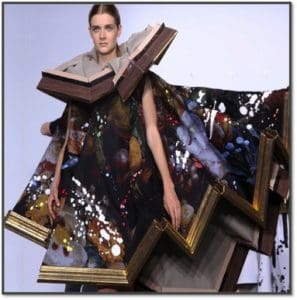
Viktor and Rolf
Factors affecting avant garde trends
The three most important factors affecting any fashion trend would be values, political environment, social environment and direct influences. A concept like “less is more” that focuses on simplicity and minimalism has become the cornerstone for a lot of avant-garde designers. They believe that a simple piece of clothing can be feature a variety of designs and you can further style them according to your own creativity. Similarly, political climate also has a major impact on the fashion world as designers and innovators need their freedom to create without any hindrance. With the growing demand of sustainability, the social environment and society pressures can also shape the design process. A highly environmentally conscious society will focus on how the garments are being manufactured. This builds a pressure on the designers to be more mindful and aware during the entire creative process. Personal experiences, philosophies and preferences of the designers can also inspire them.
Breaking Stereotypes
According to designer Barbara Gongini, avant-garde focuses on a sustainable and responsible way of producing garments. Designers are limiting their impact on the environment and actively promoting sustainability through their process of procuring and using materials.
A lot of designers have been recycling and reusing their materials. When a garment doesn’t sell or attract customers, it is broken down and recreated or redesigned using the same materials to minimize wastage. In simpler words, while fast fashion encourages a throwaway mentality, in avant-gardism, the undistributed stock is upcycled and given new forms. It again depends on designer to designer, how aware they are of the environmental conditions and how they choose to contribute to the concept of sustainability. Another way of supporting the idea of clothing longitivity is multiway design or styling a piece of garment in several ways.
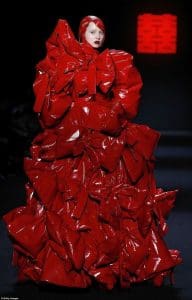

Avant-garde talks about the use of monochromatic color palette, black being the dominant color. Nowadays people want to have “real talks” that involve freedom of self-expression, unapologetically being yourself, human equality regardless of gender, background, social status etc. We believe that talking about such issues is crucial in emphasizing an individual’s strength.
It is important to understand that true creativity comes from the freedom of self-expression and to be able to practice this, all working parties must be comfortable and involved in the creative process. One of the issues that avant-garde fashion helps to eradicate is the lack of gender fluid garments. Barbara Gongini believes that many avant-garde pieces appeal to a wider audience because they are designed and crafted to be gender fluid. Versatility is clearly noticeable through the fact that avant-garde clothing doesn’t have an age requirement.
How to dress avant-garde?
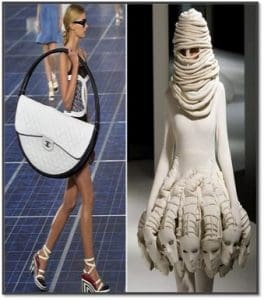
Avant-garde clothing is not for the faint hearted. You need to constantly experiment with unusual and unconventional fabrics, textures, cuts and colors. Avant-garde clothing is all things drama so add loads of that. It lets you play with the imperfections as well so feel free to focus on details like a particular hemline, thickness of a weave, daring ruffles, crazy zipping and buttons. The current trend is to go monochromatic, as that will give you a lot of room to combine more textures and cuts. Apart from that, you can underline your style with bold colors, mesh, paper, cardboard and metallics.
By Vasavi Mehta
Image courtesy : Pinterest

